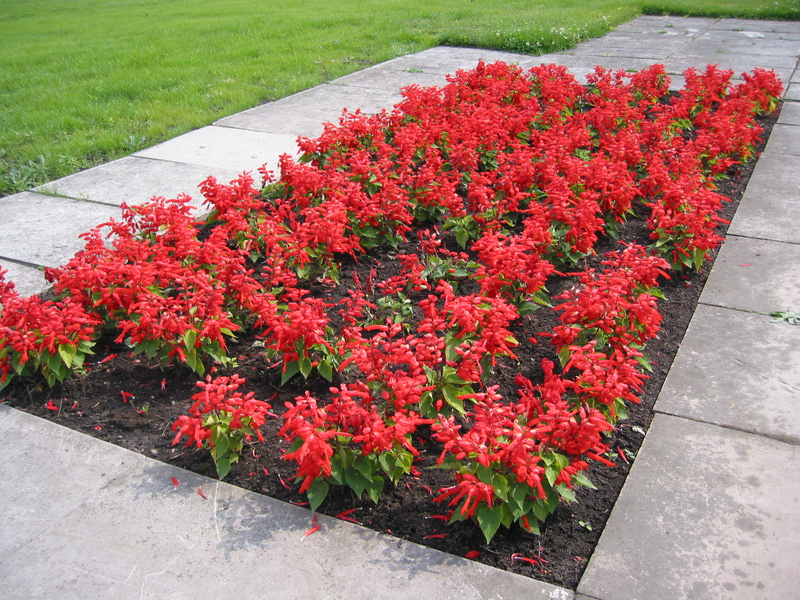
Salvia for crimson and purple flower bed carpets in your garden
Salvia (ornamental sage) are a must in the summer garden. They come in a vast range of forms and colours and their nectar-rich flowers are a magnet for bees, butterflies and other pollinating insects. They flower for months on end, often from midsummer until the first frosts, and many have aromatic foliage, too. The name ‘salvia’ derives from the Latin salveo, meaning ‘I heal’ or ‘I save’. The culinary herb, Salvia officinalis, was used as a healing plant by Greeks and Romans and is part of part of the huge Salvia genus.
Salvias look good in almost all planting schemes. They look great in a mixed or herbaceous border and are great for underplanting roses – they begin flowering just as the roses are going over and are said to keep mildew and black spot at bay. They also look great in a tropical or exotic planting scheme, alongside dahlias, bananas and cannas. Salvias are ideal for a coastal garden and are often a key plant in a dry garden. They also grow very well in pots, making long-lasting displays on the patio.
Platycodon a beautiful plant with purple flowers is a delight for the yard and garden in summer and winter

How to grow salvia
All salvias grow best in full sun, in well-drained soil. Deadhead to prolong flowering. Salvias may be lost over the winter if the soil is very cold and wet, so take cuttings at the end of the summer to insure against winter losses. Alternatively, grow tender varieties in pots and keep in a frost-free spot over winter. Wait until late spring to cut old growth back.
All salvias thrive in a sunny spot. They need well-drained soil and thrive on stony or poor soils. If you are gardening on heavy clay, you will need to improve the soil before planting. All salvias are likely to die in waterlogged soil in winter.
Aubrieta: A rocky ground cover beauty in your garden

How to plant salvia
The best time to plant salvias is from late May to early June, after the risk of late frosts has passed. If you buy a plant in autumn, it’s best to keep it it in its pot in a frost-free place and plant it out the following spring to avoid losing it in a cold, wet winter.
- Before planting, trim back the plant a little to encourage sturdy, bushy growth
- On heavy soils, such as clay, add some horticultural grit to the planting hole to improve drainage
- Dig a hole that is the same size as the pot your plant came in. Plant your salvia at the same depth it was in the pot
- Backfill with soil, firm in and water in well
If you’re growing a salvia in a container, plant into peat-free, multipurpose compost with some horticultural grit or sand added for extra drainage. Ensure that the pot has drainage holes at the bottom.
Campsis: How to grow the beautiful plant in your yard and garden

How to care for salvia
Salvias in the ground should get all the moisture they need from rainfall; they are drought tolerant once established. However rain rarely reaches the compost in pots, so salvias growing in containers need watering regularly.
There is no need to feed plants growing in the ground – they will produce foliage at the expense of flowers. Feed salvias in pots from spring to early autumn with a high potash feed such as tomato food.
Deadhead to keep new flowers coming.



























1 comment
[…] of bright colors and abundant flowering. Spreading plants, good as a ground cover, for creating carpet flower beds. Used when decorating borders, alpine slides. Drought-resistant, unpretentious, recommended for […]
Comments are closed.